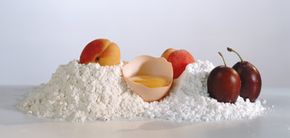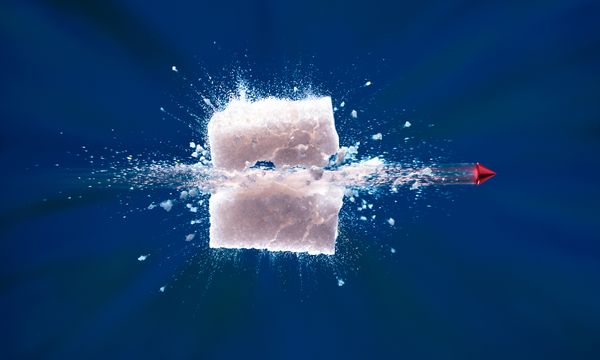White flour is made up mostly of starch. If you have read the article How Food Works, you know that starch is a carbohydrate, meaning that it is made of sugar molecules chained together. Anyone who has ever lit a marshmallow on fire knows that sugar burns easily. So does flour.
Flour and many other carbohydrates become explosive when they are hanging in the air as dust. It only takes 1 or 2 grams of dust per cubic foot of air (50 or so grams per cubic meter) for the mixture to be ignitable. Flour grains are so tiny that they burn instantly. When one grain burns, it lights other grains near it, and the flame front can flash through a dust cloud with explosive force. Just about any carbohydrate dust, including sugar, pudding mix, fine sawdust, etc., will explode once ignited.
Advertisement
When you hear about an explosion in a grain elevator on the news, this is what has occurred. A spark or a source of heat ignited the dust in the air and it exploded.



